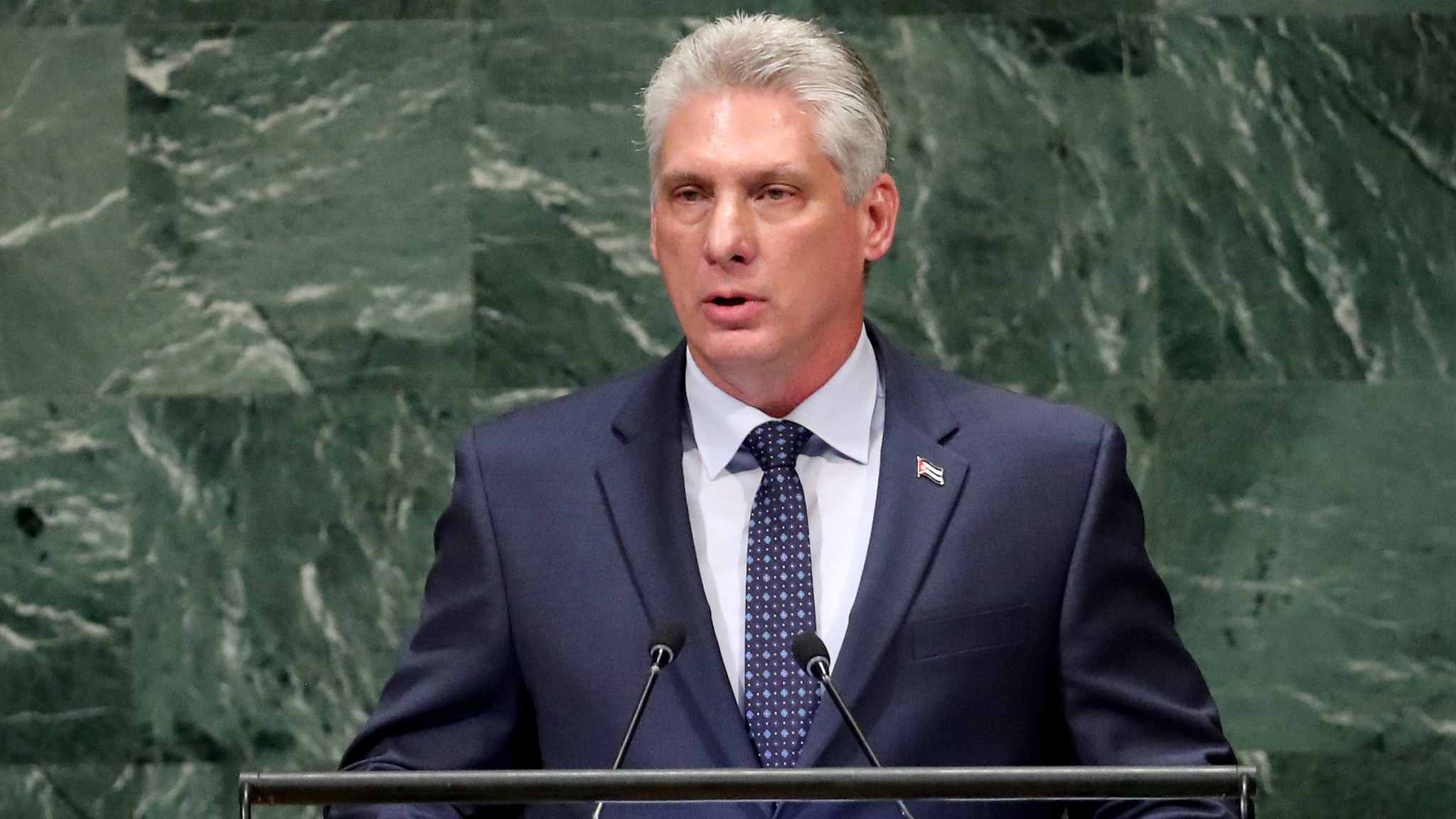Only a few hours before turning 58, Miguel Diaz-Canel became Cuba's new president. He was elected in April by a majority of the 604 lawmakers that make up the National Assembly of People's Power, the country's parliament.
He is expected to continue implementing the political and economic reforms initiated by his predecessor, Raul Castro, in 2011, some of which are urgent for the country's development.
The election of Diaz-Canel indicates a historic transfer of power to a younger generation of Cuban leadership from the Castro brothers. Fidel Castro led a socialist revolution to victory in 1959, after which he was leader of the island country for nearly half a century.
The late revolutionary handed over power to his younger brother Raul in 2006 as his deteriorating health rendered him incapable of fulfilling his leadership duties.
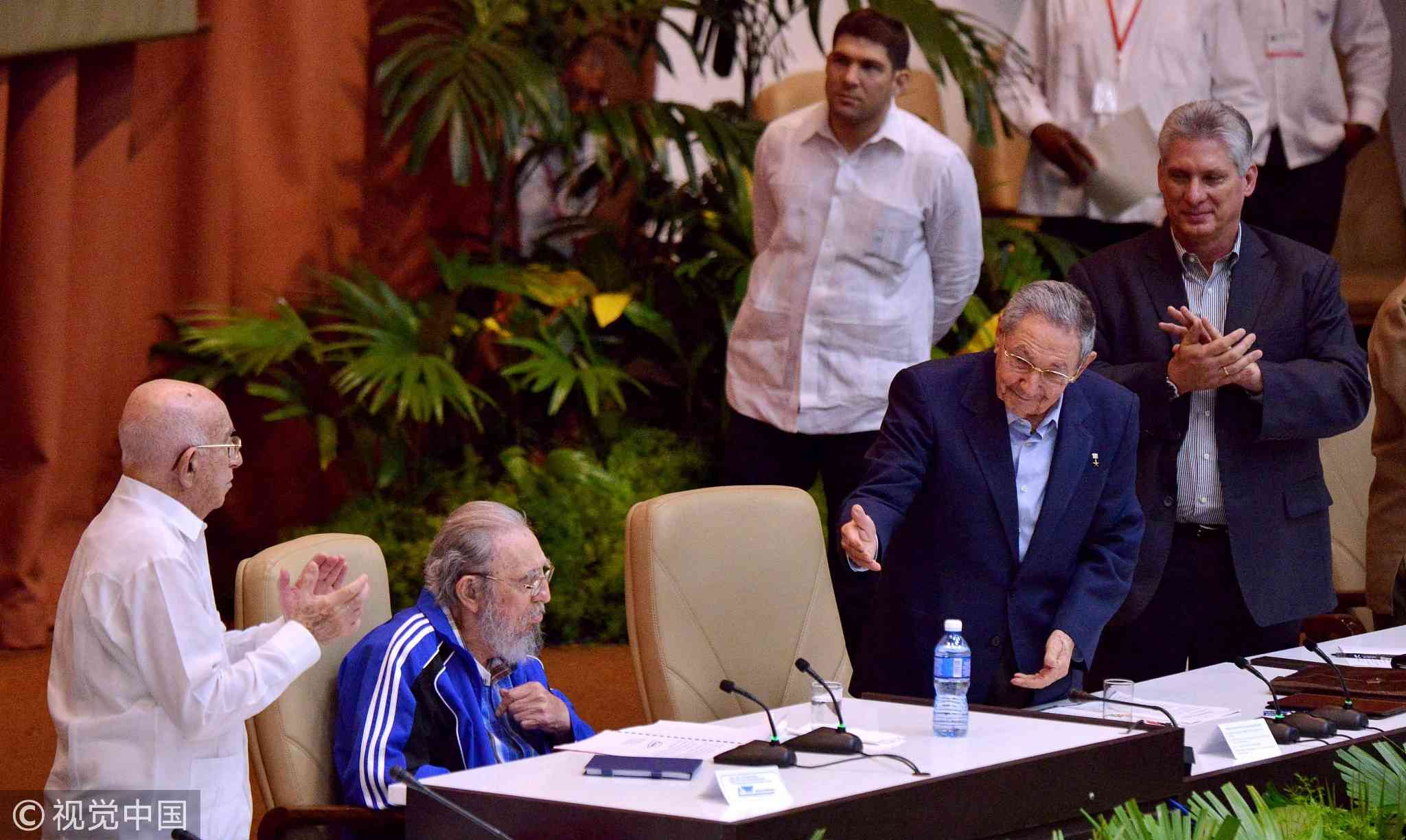
Cuban President Raul Castro (2nd-R), Miguel Diaz-Canel (R) First Vice President of the Council of State, Jose Ramon Machado Ventura (L) Vice President of the Council of State, and former Cuban President Fidel Castro (2nd-L) during the closing ceremony of the seventh Congress of the Cuban Communist Party (PCC) at Convention Palace in Havana, on April 19, 2016. /VCG Photo
Cuban President Raul Castro (2nd-R), Miguel Diaz-Canel (R) First Vice President of the Council of State, Jose Ramon Machado Ventura (L) Vice President of the Council of State, and former Cuban President Fidel Castro (2nd-L) during the closing ceremony of the seventh Congress of the Cuban Communist Party (PCC) at Convention Palace in Havana, on April 19, 2016. /VCG Photo
A grassroots figure's steady rise
Diaz-Canel was born in April 1960, little over a year after Fidel Castro was first sworn in as prime minister.
Emerging from the grassroots and climbing the ranks of the country's political hierarchy, Diaz-Canel has, as the younger Castro once said, demonstrated "capacity" and a "solid ideological firmness."
The new president graduated in 1982 from the University of Las Villas, where he majored in electrical engineering.
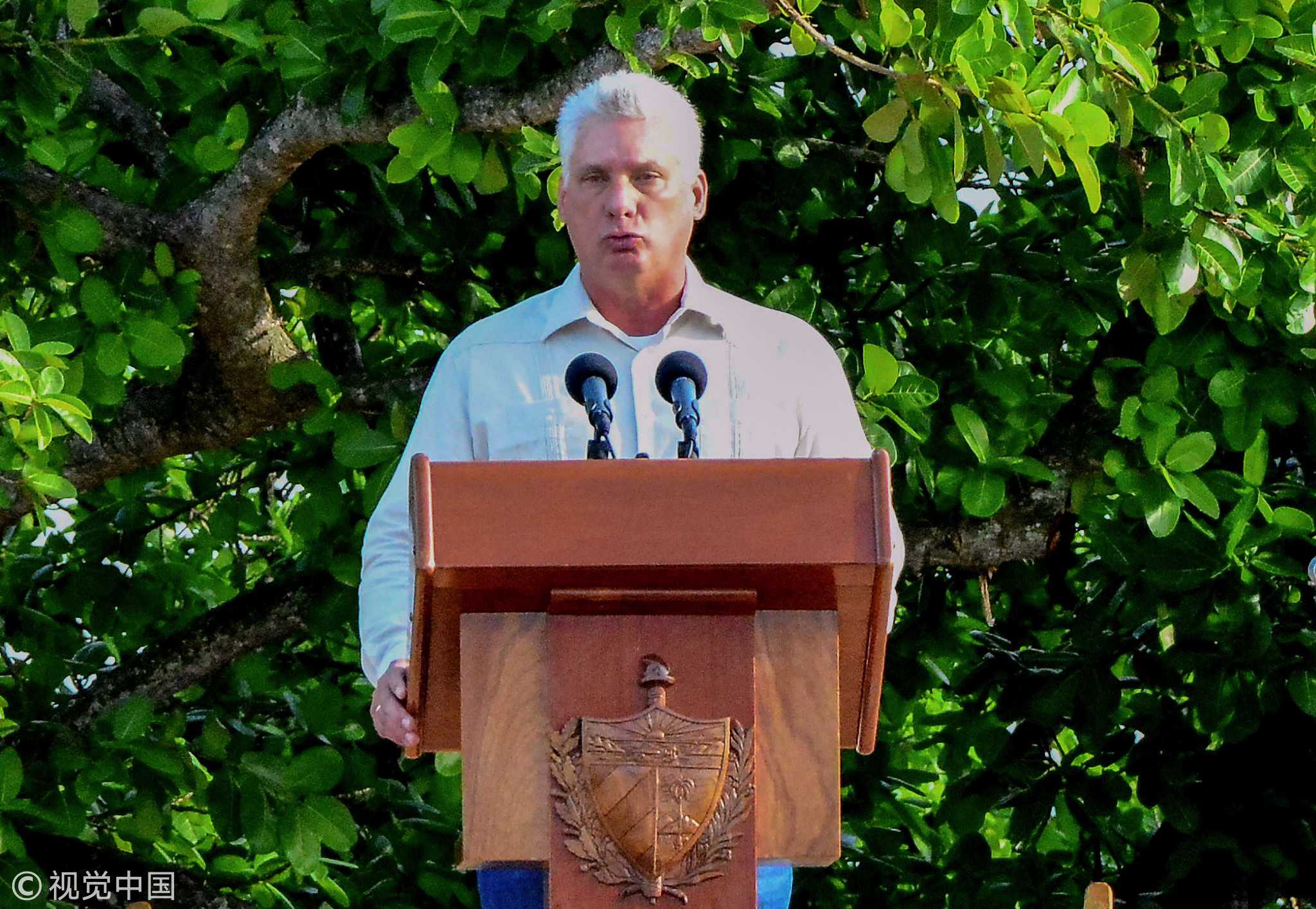
Cuban President Miguel Diaz-Canel, delivers a speech during the celebrations for the 150th anniversary of the beginning of the independence war against Spain, in La Demajagua farm, Manzanillo, Granma province, October 10, 2018. /VCG Photo
Cuban President Miguel Diaz-Canel, delivers a speech during the celebrations for the 150th anniversary of the beginning of the independence war against Spain, in La Demajagua farm, Manzanillo, Granma province, October 10, 2018. /VCG Photo
His political career also began in his early 20s as the head of the Young Communist League of Cuba (UJC) in Santa Clara, a city which was the site of the last battle in the Cuban Revolution
He also served as first secretary of two of the Communist Party of Cuba's (PCC) provincial committees, first in Villa Clara and then in Holguin, around 735 km northeast of Havana.
A low-profile successor
Despite his steady work at the provincial level, it took Diaz-Canel another 10 years, until 2003, to make it onto the Politburo, the Communist Party's executive committee.
When Cubans endured hardships during what was known in the country as the "special period" after the fall of the Soviet Union, Diaz-Canel became popular among the public in the localities that he served and a role model for other officials to follow.
During that time, he was usually seen riding a bike or walking to meetings, always ready to listen to citizens' problems and find solutions.
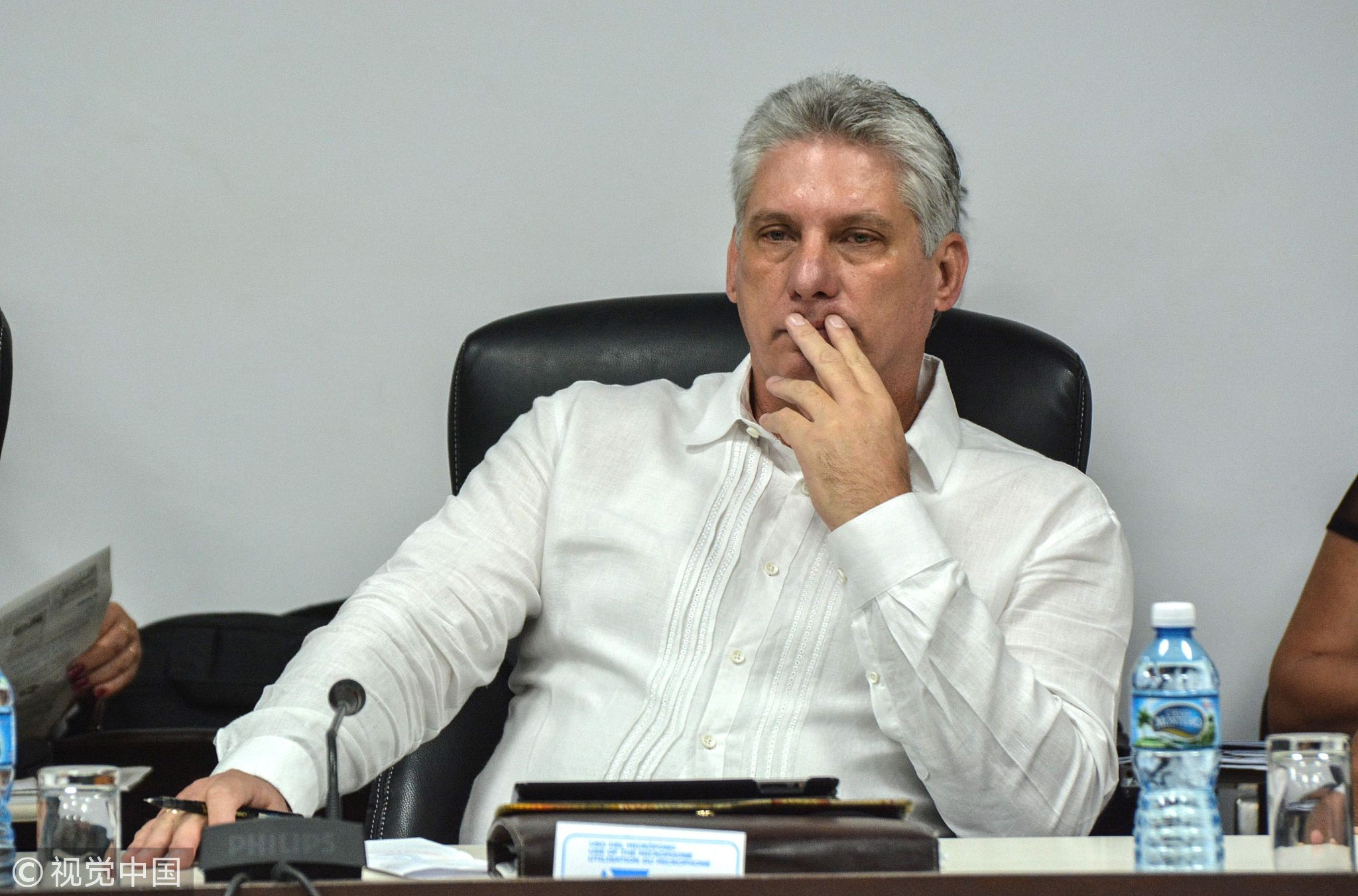
Cuban First Vice President Miguel Diaz-Canel attends the Permanent Working Committees of the National Assembly of the People's Power in Havana, on July 11, 2017. /VCG Photo
Cuban First Vice President Miguel Diaz-Canel attends the Permanent Working Committees of the National Assembly of the People's Power in Havana, on July 11, 2017. /VCG Photo
Residents of Villa Clara and Holguin still remember him as a modest man, competent and close to the people, with a high sense of teamwork and constantly demanding subordinates to preach by example.
He was appointed by Raul Castro in 2009 as minister of higher education, and three years later vice president of the Council of Ministers in charge of education, science, culture and sports.
In February 2013, he was elected first vice president of the Council of State by the National Assembly, which made him the first Cuban official born after the 1959 revolution to hold that position.
Having maintained a relatively low profile as vice president, he has as recently as last year taken center stage in the government, appearing on multiple public occasions in which he defended the continuity of the Cuban socialist model while calling for more dialogue with the new generations.
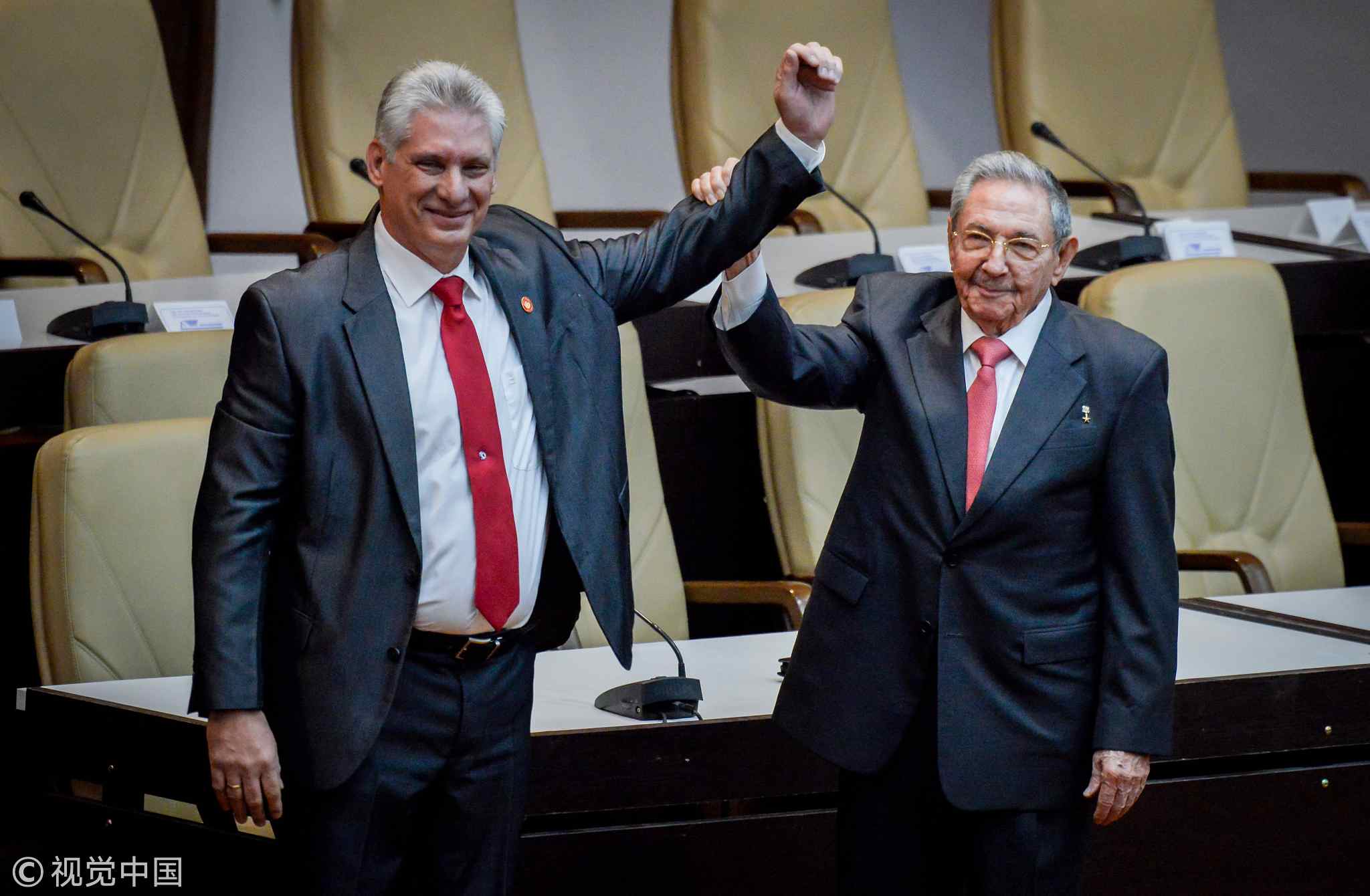
Former Cuban President Raul Castro raises the arm of newly elected Cuban President Miguel Diaz-Canel during the National Assembly at Convention Palace in Havana, Cuba, April 19, 2018. /VCG Photo
Former Cuban President Raul Castro raises the arm of newly elected Cuban President Miguel Diaz-Canel during the National Assembly at Convention Palace in Havana, Cuba, April 19, 2018. /VCG Photo
Diaz-Canel is critical of issues such as corruption, bureaucracy, foreign media manipulation, and giving more power to local officials to let them interact more directly with the public and carry out reform agendas on their own.
He was seen engaging closer with locals as his media exposure increased considerably in the last three months. This image of being friendly to ordinary people has been likened in Cuba to that of the Castro brothers during difficult times.
Diaz-Canel said at a parliamentary election in March that "the people's freedom, independence and sovereignty will endure, and we will never give up on those things."
(With inputs from Xinhua)

